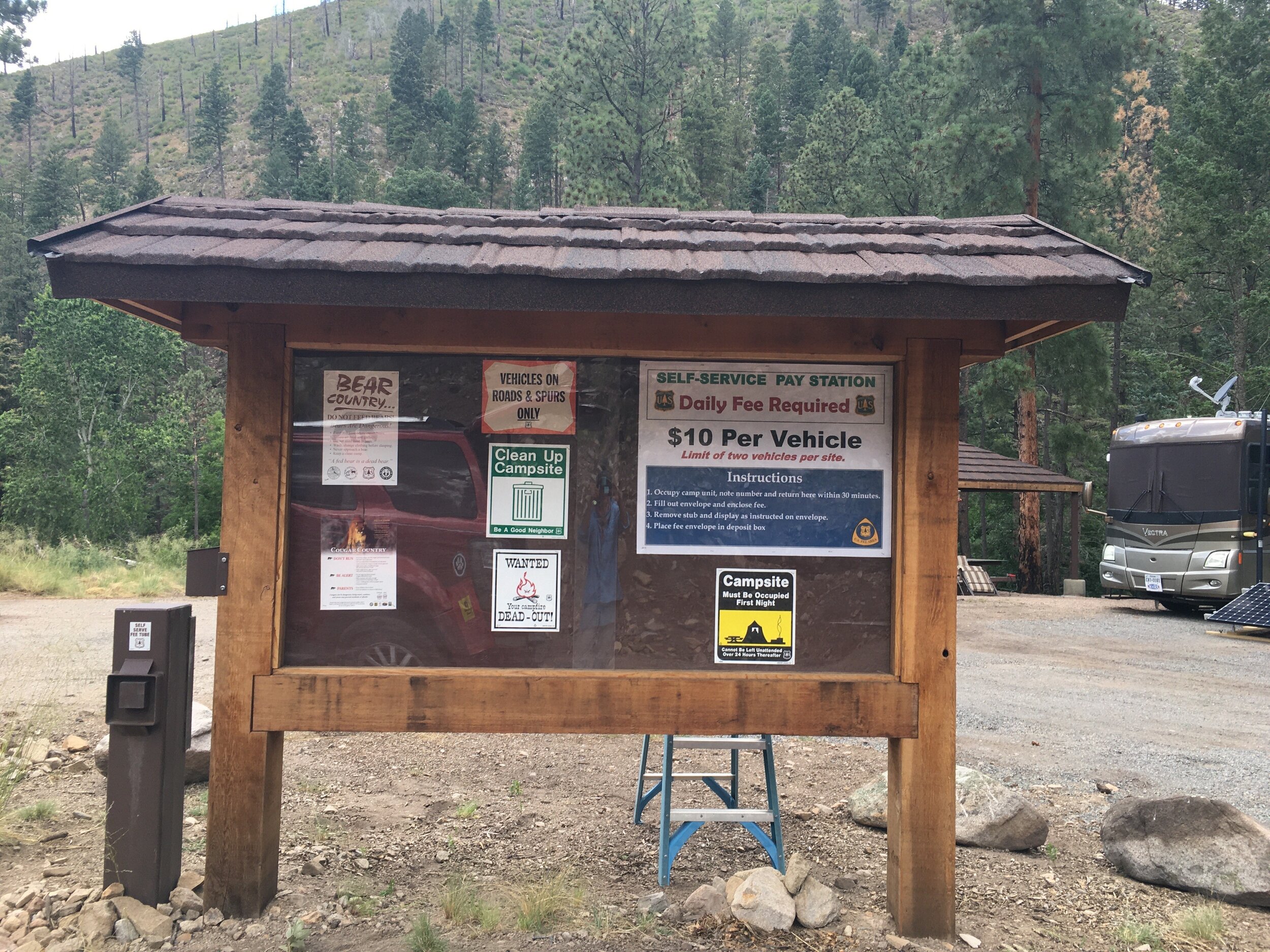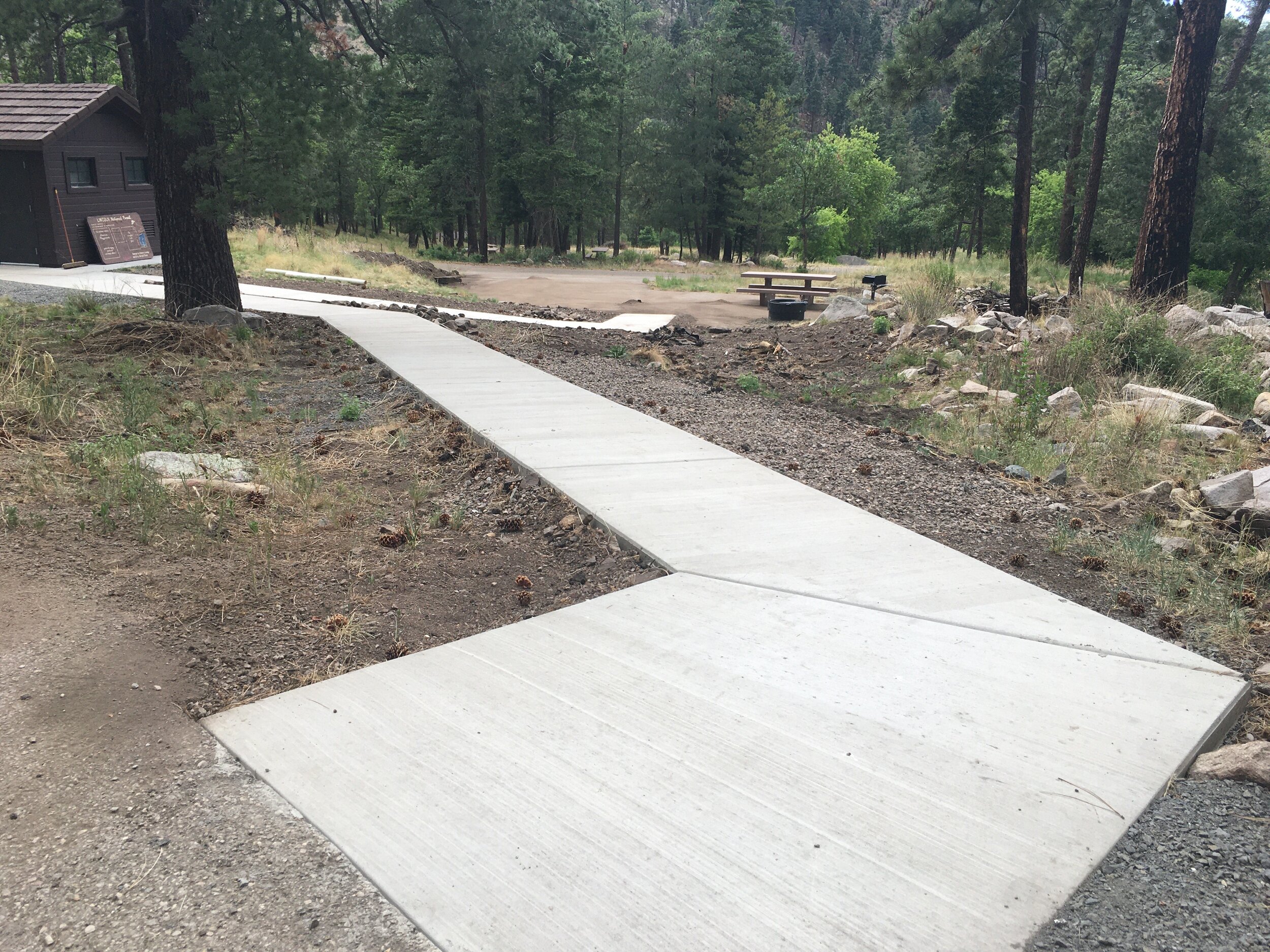Southfork Campground Reopens After Eight Years
Southfork Campground on the Smokey Bear Ranger District near Ruidoso, NM opened its gates for the first time in eight years on Friday, August 14, 2020. The campground was severely damaged by the 2012 Little Bear Fire and subsequent flooding. After years of work, the campground is once again ready to host those looking to get outdoors and enjoy the Lincoln National Forest. A campsite costs $20 per night, $5 per night for each additional vehicle, and is available on a first-come-first-serve basis. Most of the fees will be used to further improve the campground.
Campsites are ready for use however; the area could still use a little TLC from visitors. We are encouraging any helpful campers to tidy up their campsite by removing pine needles and pinecones and leaving the area better than when you found it. Show us your before and after pictures on Facebook by tagging #ILoveSouthForkCampground. We’d love to see how you have helped care for your public lands.
“When I arrived in 2016, I asked the staff about their top three things they wanted to see get done on the District. Every person said get Southfork Campground open,” said District Ranger Jodie Canfield. “It’s taken a lot of time, and effort from the entire forest and our partners, as well as scraping up money every year to get us to this point. The setbacks were many and postponed us from opening many times. I am really excited to offer this opportunity to the public once again, especially given the uptick in visitation we’ve seen this year.”
History
Southfork Campground is one of the oldest established campgrounds on the Lincoln National Forest, dating back to the 1960s. Before 2012 it was also one of the most popular because of the river and access to the White Mountain Wilderness on Trail 19.
In June 2012, the Little Bear Fire had people fleeing the campground. It burned the upper drainage, parts of the campground, and several outhouses. Some sections of Southfork Campground were likely spared because over the years, all the wood, pine needles, and cones in the fire’s path were used in campfires. Soon after the fire, a nearby drainage blew out of its channel and took out several campsites and one bathroom when the area was flooded with tons of water, silt, mud, rocks, and fallen trees.
The Long Road to Rebuilding
In 2014, the Forest developed a plan to rebuild after doing a hydrologic analysis showing where flooding could occur again. Fifty-three of the original 60+ campsites are once again available for use based on this plan. Because of COVID, only half of the sites will be available this summer.
Restoration work was extensive. As money became available, the blown-out drainage was re-shaped and two low-water crossings were built in the nearby creek to help control flash flooding in the future. The road to the campground was milled and graded as part of a partnership between the Forest Service and Lincoln County. The water system, consisting of a solar powered pump that moves water from a well to a storage tank, was revamped. The system includes gravity fed pipelines that feed two newly constructed restrooms and water spigots all over the campground. A third restroom that survived the fire was restored. An ADA compliant pathway to one of the restrooms was constructed.
In 2017, the Mexican Spotted Owl, a threatened species, was discovered living in the campground. It likely moved into the campground because its usual habitat had been destroyed by the Little Bear Fire. The Lincoln National Forest began the required consultation with the US Fish and Wildlife Service for the newly discovered breeding pair, which temporarily postponed work in the campground during the breeding season.
Restoration eventually resumed. Twenty acres near the campground was planted with ponderosa and Douglas fir seedlings. Dead but still standing trees (aka snag trees) on either side of the trail up to the wilderness boundary were removed to help reduce the risks to trail users. The campground was treated with prescribed fire to reduce grass loading in 2018.
Damaged shade structures, picnic tables, dumpsters, and fire rings were replaced. A new trailhead, signage, kiosk, and fee deposit station were installed. Over 1,000 shrubs and trees were planted in the riparian area (aka wetland) above the campground. General cleanup, (think years of needle drop and cones), is on-going.
After years of work, Southfork was set to open Memorial Day 2020. Then COVID hit, postponing the opening.
Reopening
In late July, with fire restrictions lifted and visitation on the forest skyrocketing, Forest Supervisor Travis Moseley and District Ranger Jodie Canfield decided to open the campground at 50% capacity and with the hopes for campers to help clean up needles and cones, as well as follow the latest state orders for sanitation, social distancing, group size, and use of face coverings. The Lincoln National Forest is trying to safely manage its facilities during COVID-19 while also trying to meet the higher demand for outdoor recreation like camping and hiking. Campfires are allowed but follow Smokey’s rules to put it dead out and never leave it unattended. Campers are also reminded to be properly prepared for afternoon monsoonal rainstorms.




